

Loris Tjeknavorian
Requiem for the Massacred
Duration: 28'
Instrumentation details:
trumpet in C
1st percussion
2nd percussion
3rd percussion
4th percussion
5th percussion
6th percussion
Requiem for the Massacred
Translation, reprints and more
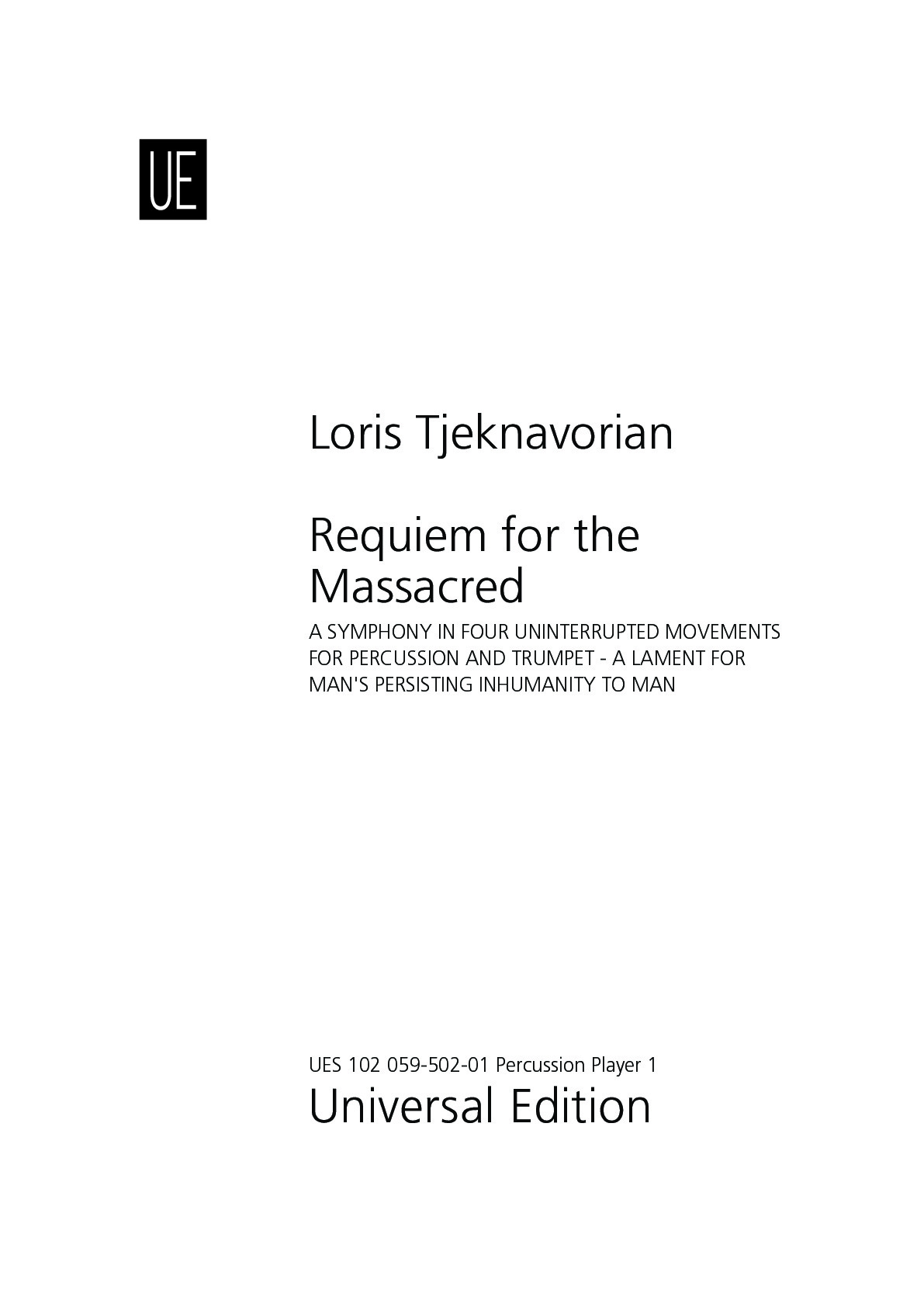
Loris Tjeknavorian
1. Schlagzeug (Requiem for the Massacred)Type: Stimme

Loris Tjeknavorian
2. Schlagzeug (Requiem for the Massacred)Type: Stimme
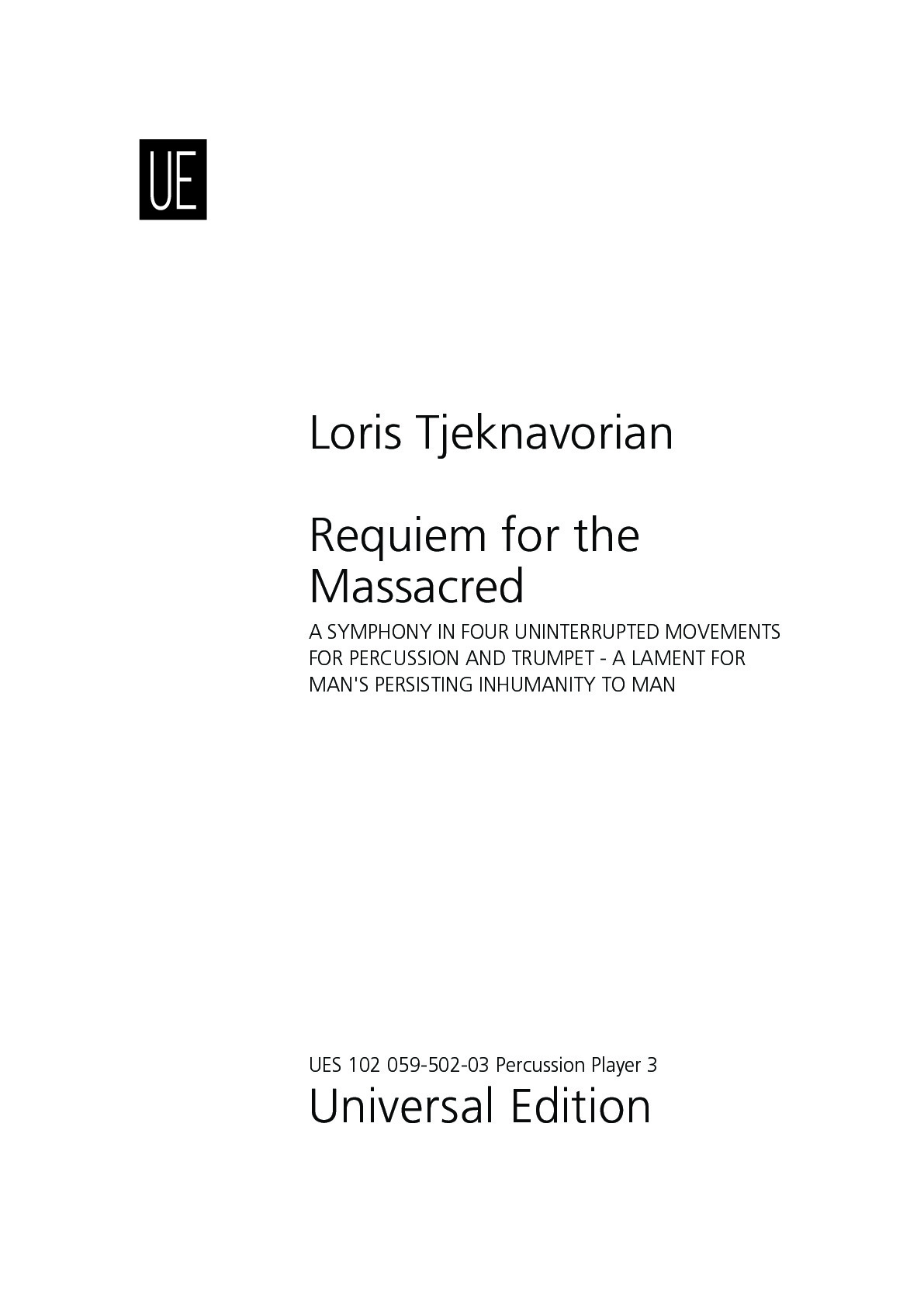
Loris Tjeknavorian
3. Schlagzeug (Requiem for the Massacred)Type: Stimme
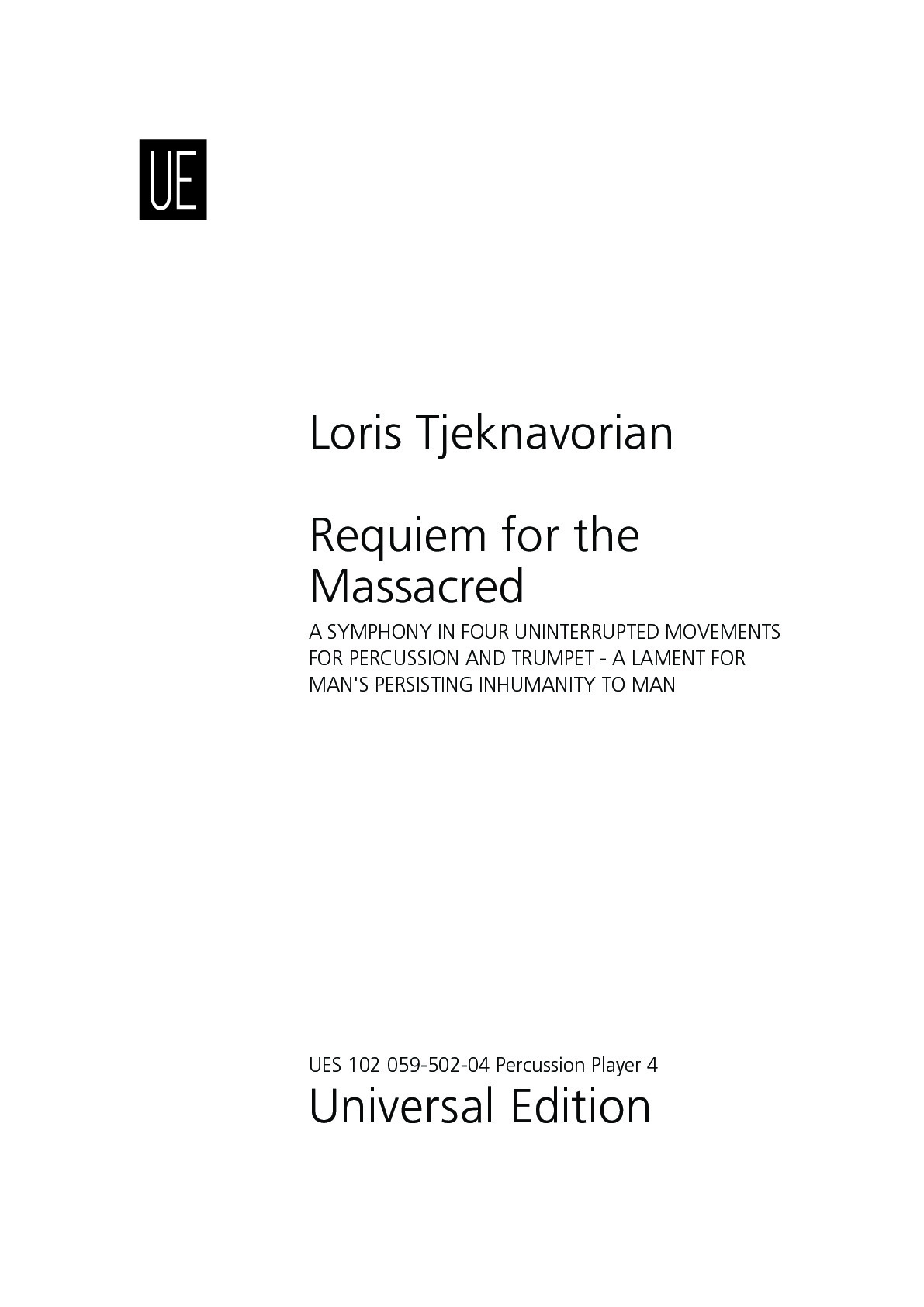
Loris Tjeknavorian
4. Schlagzeug (Requiem for the Massacred)Type: Stimme
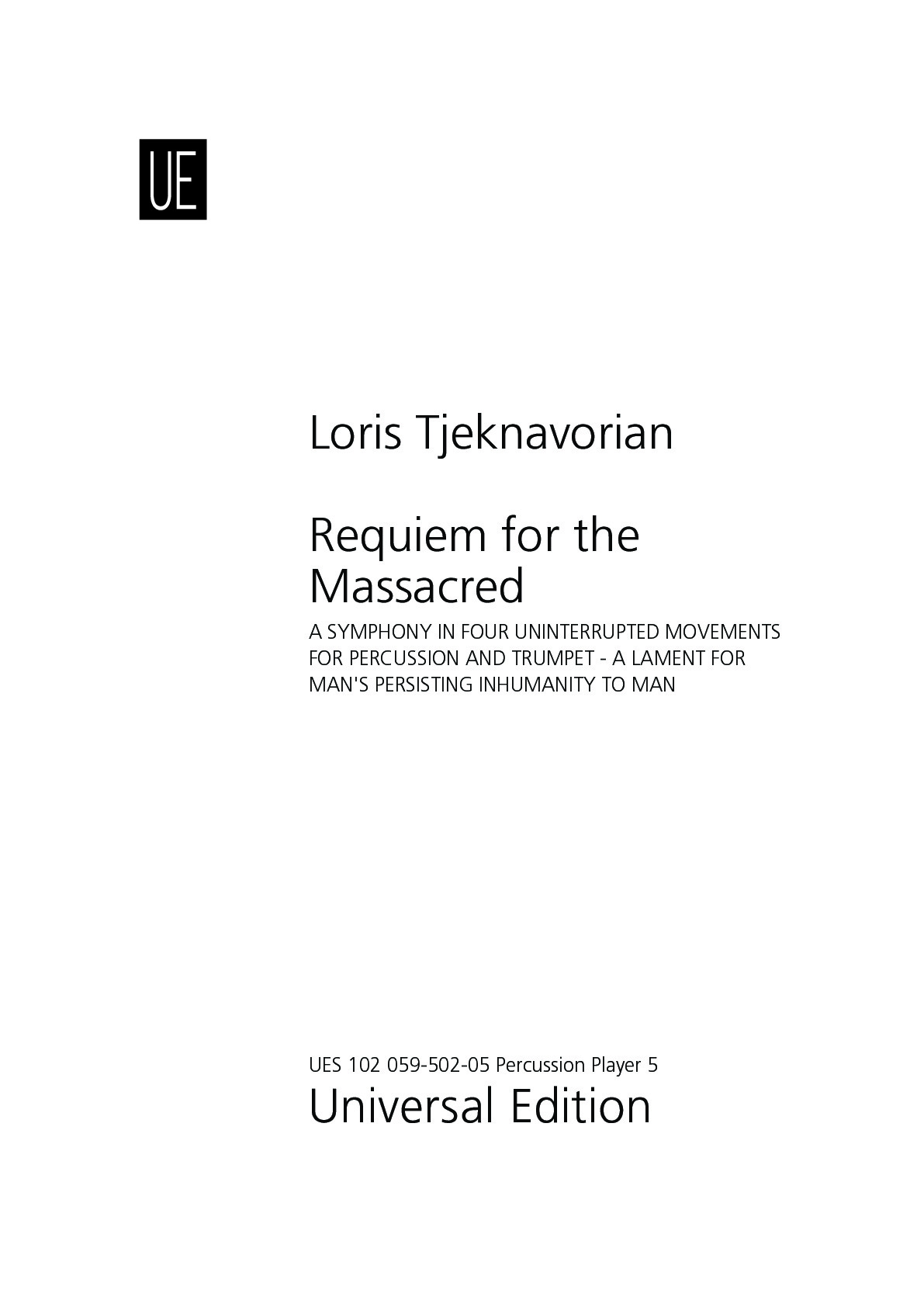
Loris Tjeknavorian
5. Schlagzeug (Requiem for the Massacred)Type: Stimme
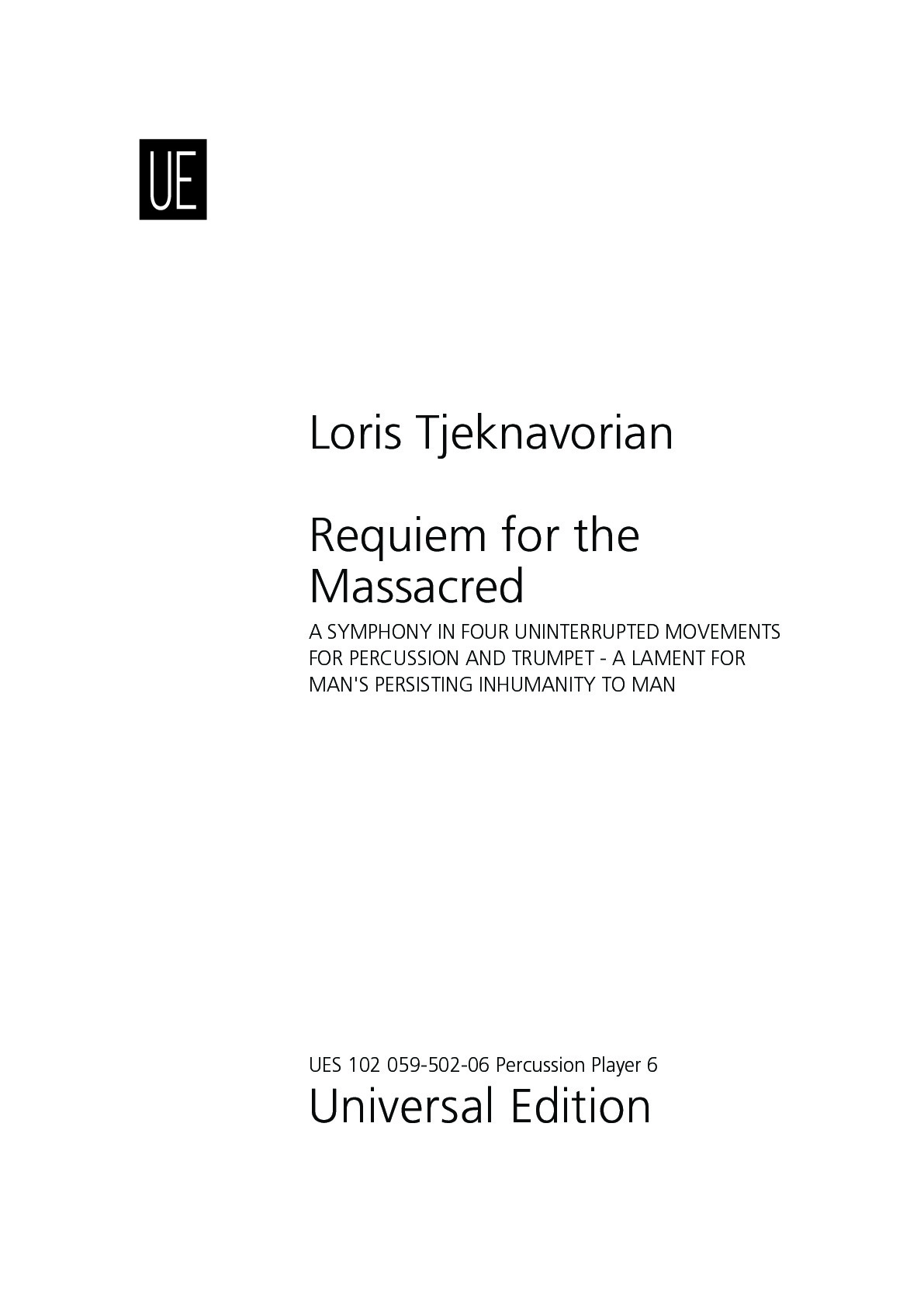
Loris Tjeknavorian
6. Schlagzeug (Requiem for the Massacred)Type: Stimme
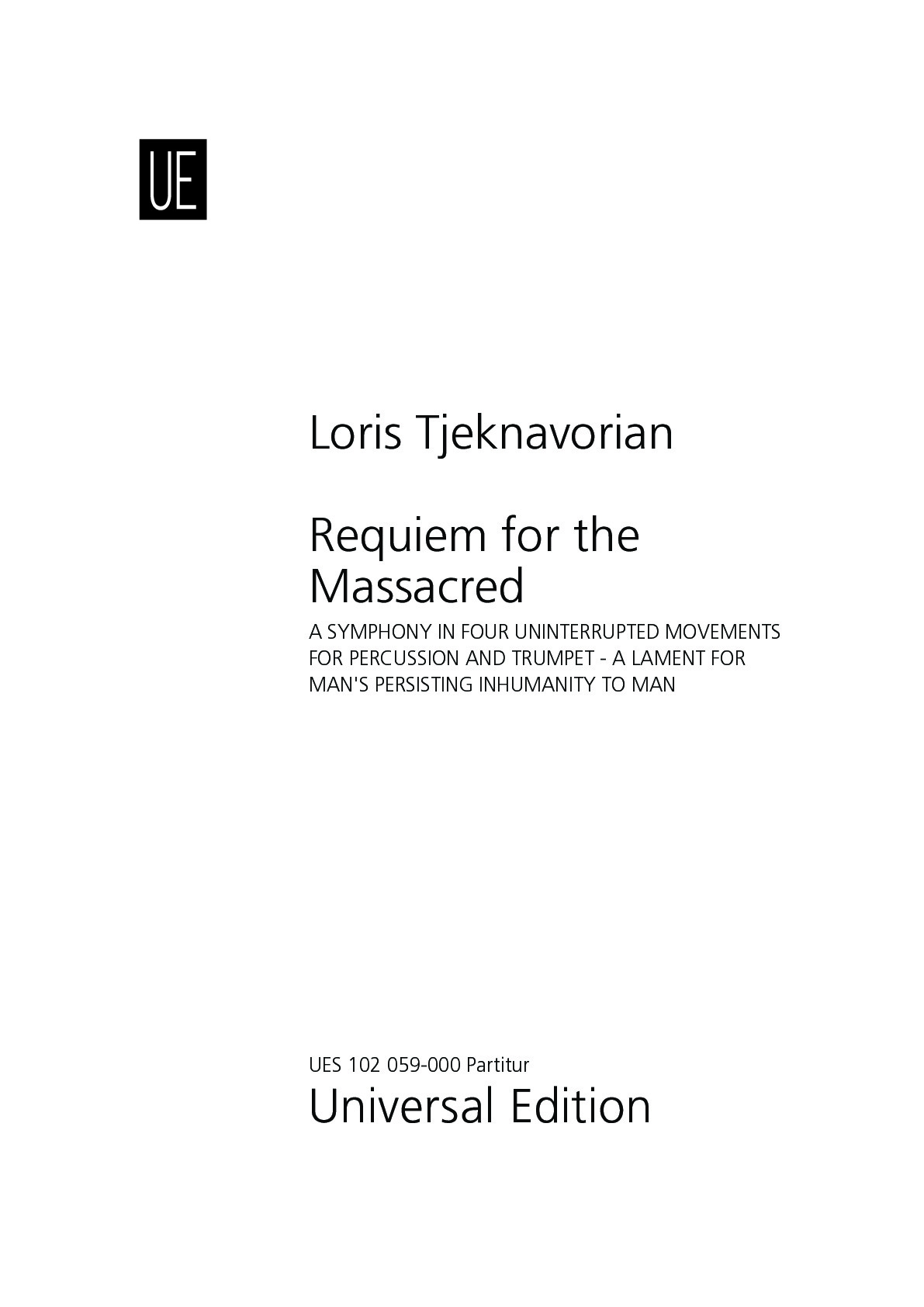
Loris Tjeknavorian
Requiem for the MassacredType: Dirigierpartitur
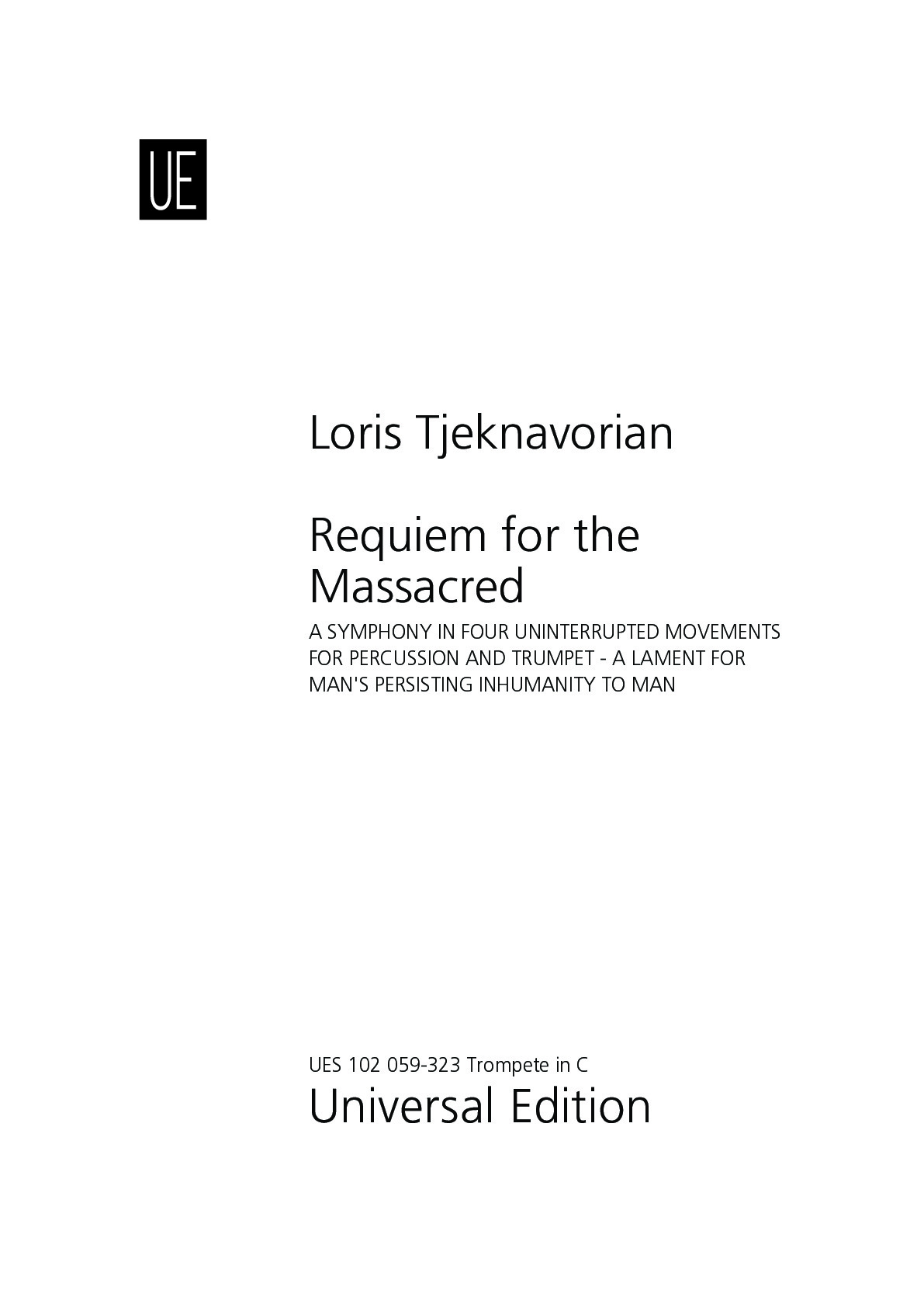
Loris Tjeknavorian
Trompete in C (Requiem for the Massacred)Type: Stimme
Video
Work introduction
The result of many years of study and research into Armenian and Oriental music, the whole, fully notated and non-improvisational, is scored for twenty-six different pitched and un-pitched percussion instruments (mostly in multiples), solo trumpet and celesta. To enhance the imagery and symbolism of the music I use throughout instruments associated with either the Armenian Church or Islamic practice - bells, cymbals, trumpet, drums. Additionally, I refer to authentic melodies and rhythms, to sacred chants and modes, of Armenian tradition, and to secular folk material. The timbre of the work is distinctive: my interest in percussion, and my experimentation with unorthodox instrumental combinations, goes back to my student days in Vienna - the Ballet Fantastique (1958) and Piano Concerto (1960-61) both show an early preoccupation, as do such later examples as the Lake Van Suite (1972-75) and Moods (1975), not to mention, of course, the Credo Symphony.
The first movement is underlined by two main ideas. Firstly, a Death motif (based on an Islamic rhythmic pattern and characterised by the interval of a falling tritone) given initially to bass drum and cymbals, latterly to timpani: this, heard at the outset, unifies the entire score at crucial structural and descriptive junctures, and is cyclically brought back at its conclusion. Secondly, a religious chant, the Armenian Hymn of Vesting, Khorhoort Khorin (O Mystery Deep, divided, hocket-style, between glockenspiel, vibraphone and marimbaphone): this is used to suggest a peaceful people going about their daily lives, unaware of the doom that is about to befall them.
Pervaded by references to the Death motif, the second movement portrays chaos and frenzy, massacre and horror. At its climax Death, rung out on bells, is heard, symbolically, to be the victor. Darkness falls. Beneath the stars the executed lie still, a tumble of "dust-covered skeletons". Their executioners, the task done, depart. A slow march of steady beat sounds.
Silence.
In the Requiem movement an off-stage trumpet intones the Death motif as from afar. Church bells answer. Three twelfth century liturgical hymns by St. Nerses Shnorhali (Nerses the Gracious, Armenia's greatest medieval Catholicos and poet) follow: Der Voghormia (Lord have Mercy) on glockenspiel and vibraphone, I Verin Erousalem (In Heavenly Jerusalem - a chant for the dead) on tubular and plate bells, and Amen Havr Sourb' (Amen Holy Father) on crotales, celesta, glockenspiel and vibraphone. A diminuendo funeral march in 5/4 time, solemnised by kettle-drums against block chords for pitched percussion, offers cadential reflection. (The "Requiem" reference of this movement has no religious or denominational significance. I use the word in its original sense of meaning "peace-for the dead": Requiem aeternam dona eis, Domine, et lux perpetua luceat eis - "Eternal rest give to them, O Lord; and let perpetual light shine upon them."
The finale opens with the main germinal ideas of the work - hymns and chants, the Death motif superimposed. The trumpet then takes up an Armenian immigrant song of allegorical sentiment, a song that used to be close to the heart of my grandfather Tzitzernak (Swallow):
Swallow, swallow
You are a beautiful bird of spring.
Tell me where you are flying,
Flying so hurriedly?
Ah, fly swallow, fly.
My birthplace is Ashtarak,
Fly there and under the roof
of the fatherland build your nest,
Fly swallow, fly.
Accompanied by (a) an ostinato derived from Der Voghormia (Lord have Mercy) played on different instruments, and (b) a chromatic figuration for celesta offset against a side-drum motif, the song is never finished: like peoples everywhere who die in exile, its spirit is constantly searching and restless. It is without anchorage. The symphony ends with a cry of protest: Amen Hayr Sourb' (Amen Holy Father) and the Death motif clash violently against one another.
1st perf: 26 April 1975, St. John's, Smith Square, London.
John Wallace/London Percussion Virtuosi/composer
What is necessary to perform this work?
Instruments
Pitched
- 2 sets Crotales
- 2 Glockenspiel
- 1 Xylophone
- 3 sets Classic Chimes
- 1 set Chromatic Bell Plates
- 3 Vibraphones
- 1 Marimbaphone
- 5-9 Chromatic Timpani
- Celesta
- Trumpet in C
Unpitched
- 1 set Finger Cymbals, suspended
- 1 set Triangles
- 1 set Chinese Wood Blocks
- 1 set Temple Blocks
- 1 pair Bongos
- 1 Snare Drum
- 2 sets High Pitched Tom-Toms
- 1 set Medium Pitched Tom-Toms
- 1 set Low Pitched Tom-Toms
- 2 extra Tom-Toms
- 5 Snare Drums
- 2 pairs Crash Cymbals
- 4 different sized Bass Drums
- 2 sets of 5 different sized Gongs
- 2 Low Pitched Tam Tams
- Jew's-Harp or Flexatone
- 2 sets Suspended Cymbals
